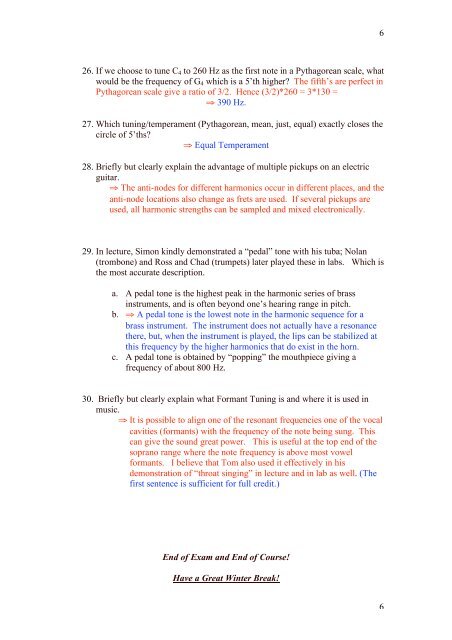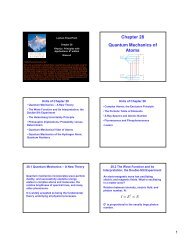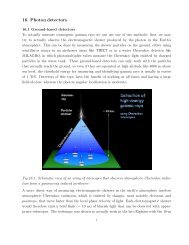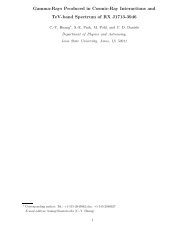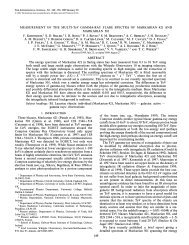1 1 Physics 198 Final Exam-Solution December 16, 2008 The exam ...
1 1 Physics 198 Final Exam-Solution December 16, 2008 The exam ...
1 1 Physics 198 Final Exam-Solution December 16, 2008 The exam ...
You also want an ePaper? Increase the reach of your titles
YUMPU automatically turns print PDFs into web optimized ePapers that Google loves.
6<br />
26. If we choose to tune C 4 to 260 Hz as the first note in a Pythagorean scale, what<br />
would be the frequency of G 4 which is a 5’th higher? <strong>The</strong> fifth’s are perfect in<br />
Pythagorean scale give a ratio of 3/2. Hence (3/2)*260 = 3*130 =<br />
⇒ 390 Hz.<br />
27. Which tuning/temperament (Pythagorean, mean, just, equal) exactly closes the<br />
circle of 5’ths?<br />
⇒ Equal Temperament<br />
28. Briefly but clearly explain the advantage of multiple pickups on an electric<br />
guitar.<br />
⇒ <strong>The</strong> anti-nodes for different harmonics occur in different places, and the<br />
anti-node locations also change as frets are used. If several pickups are<br />
used, all harmonic strengths can be sampled and mixed electronically.<br />
29. In lecture, Simon kindly demonstrated a “pedal” tone with his tuba; Nolan<br />
(trombone) and Ross and Chad (trumpets) later played these in labs. Which is<br />
the most accurate description.<br />
a. A pedal tone is the highest peak in the harmonic series of brass<br />
instruments, and is often beyond one’s hearing range in pitch.<br />
b. ⇒ A pedal tone is the lowest note in the harmonic sequence for a<br />
brass instrument. <strong>The</strong> instrument does not actually have a resonance<br />
there, but, when the instrument is played, the lips can be stabilized at<br />
this frequency by the higher harmonics that do exist in the horn.<br />
c. A pedal tone is obtained by “popping” the mouthpiece giving a<br />
frequency of about 800 Hz.<br />
30. Briefly but clearly explain what Formant Tuning is and where it is used in<br />
music.<br />
⇒ It is possible to align one of the resonant frequencies one of the vocal<br />
cavities (formants) with the frequency of the note being sung. This<br />
can give the sound great power. This is useful at the top end of the<br />
soprano range where the note frequency is above most vowel<br />
formants. I believe that Tom also used it effectively in his<br />
demonstration of “throat singing” in lecture and in lab as well. (<strong>The</strong><br />
first sentence is sufficient for full credit.)<br />
End of <strong>Exam</strong> and End of Course!<br />
Have a Great Winter Break!<br />
6


